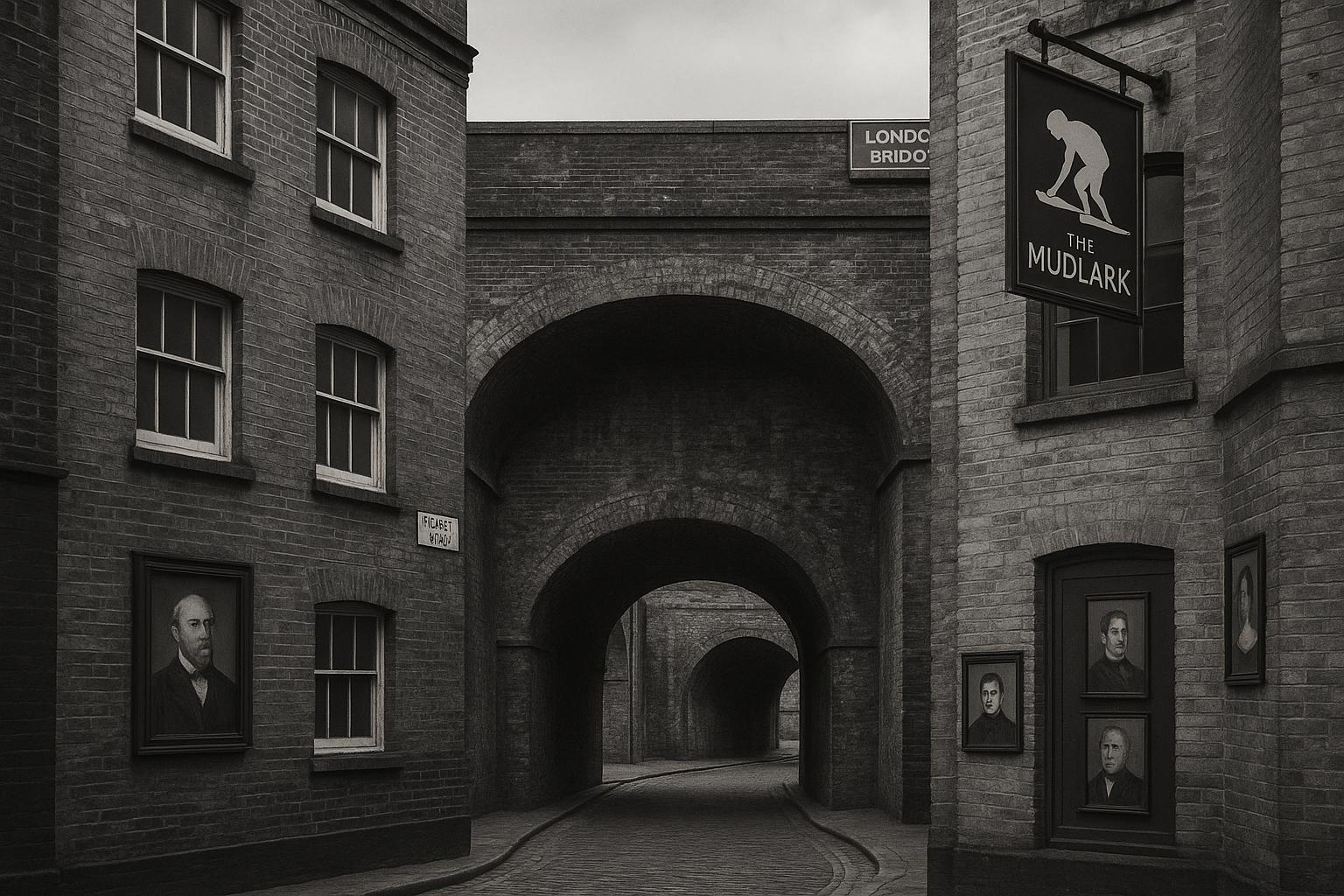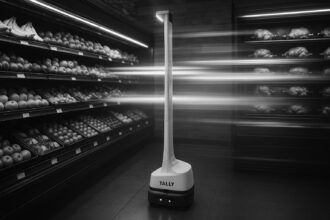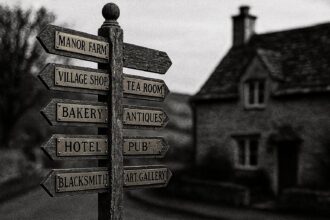The new Sun Wharf pub will open on 16 September 2025 beneath 19th‑century brick railway arches that once housed the London Dungeon and formed part of the capital’s riverside wharves, prompting interest from local historians as a mainstream chain reuses a much‑reworked fragment of the city’s built past.
A new Wetherspoons pub, The Sun Wharf, is due to open next month beneath the brick railway arches beside London Bridge station, bringing a mainstream high‑street chain into a corner of the capital rich with layers of history. According to the company, the venue at 48–50 Tooley Street will welcome its first customers on Tuesday 16 September 2025 and occupies the same distinctive arches that long housed the London Dungeon until its departure in 2013.
The arches that now frame The Sun Wharf are more than a theatrical backdrop; they are surviving fragments of London’s 19th‑century river and rail infrastructure. Wetherspoons’ own site and the pub’s history notes describe the arches as once being used by importers and provision agents who relied on the warehouses opposite, and place the building within the wider story of Tooley Street’s redevelopment through the late 20th century. The company’s publicity images emphasise exposed brickwork and period features, signalling an attempt to link the new pub visibly to that past.
The London Dungeon itself began life beneath these very arches in 1974 as a free‑flow waxworks and walkthrough exhibit focused on macabre episodes from the city’s past. The attraction evolved over decades into a more theatrical, actor‑led experience and, under new ownership, relocated to County Hall on the South Bank in early 2013 as part of a strategic move to concentrate attractions in that area. Contemporary reporting at the time recorded the closure of the Tooley Street site at the end of January 2013 and a multimillion‑pound production budget for the new County Hall incarnation.
Before the Dungeon occupied the arches, the riverside site formed part of a network of wharves and warehouses that defined London Bridge’s working riverfront. Hay’s Wharf survives nearby as Hay’s Galleria, a restored mid‑19th‑century warehouse complex; by contrast, Fenning’s Wharf and Sun Wharf were swept away during the No.1 London Bridge redevelopment in 1984–85. The Sun Wharf name thus evokes a lost riverside geography as much as it labels a contemporary pub.
Redevelopment work in the 1980s also revealed deeper strata of history. Accounts of the No.1 London Bridge project record archaeological discoveries during excavation, including human remains thought to date from much earlier periods; Wetherspoons’ material notes the unearthing of a Bronze Age burial mound during work in the area, an episode that underlines how long the site has been occupied.
The importance of the surviving structures has been recognised formally. Historic England’s records describe archways and nearby warehouse ranges as significant elements of the local townscape, with parts of the surviving fabric dated to the early 19th century and identified as remnants of Sir John Rennie’s London Bridge. Hay’s Galleria in particular is listed for its architectural and historic interest, reinforcing the conservation value of the riverside warehouses that remain.
Images shared ahead of the opening show a décor that mixes exposed brick and period portraits with a modern swirled carpet and the typical fixtures of a Wetherspoons outlet. The company presents the venue as offering patrons “a tangible connection” to the area’s history; editorially, that claim sits alongside a commonplace commercial aim — to marry heritage ambience with a high‑volume pub model. The Sun Wharf’s arrival will be watched by local history enthusiasts and commuters alike when its doors open next month.
 Reference Map:
Reference Map:
Reference Map:
- Paragraph 1 – [2], [1]
- Paragraph 2 – [3], [2], [1]
- Paragraph 3 – [4], [5], [1]
- Paragraph 4 – [1], [3], [2]
- Paragraph 5 – [1], [3], [5]
- Paragraph 6 – [6], [7]
- Paragraph 7 – [2], [1]
Source: Noah Wire Services
- https://www.express.co.uk/news/uk/2094577/inside-brand-new-wetherspoons-opening – Please view link – unable to able to access data
- https://www.jdwetherspoon.com/pubs/the-sun-wharf-london-bridge/ – The Wetherspoon page for The Sun Wharf gives the pub’s address as 50 Tooley Street, London Bridge, SE1 2TF, and notes the venue is opening on Tuesday 16 September 2025. It highlights the site’s location adjacent to London Bridge station and describes the distinctive brick railway arches which formerly housed the London Dungeon until 2013. The entry outlines local history, explaining the arches were once occupied by importers and provision agents serving nearby warehouses, and mentions surviving sites such as Hay’s Wharf (now Hay’s Galleria). It also states Fenning’s Wharf and Sun Wharf were replaced by No.1 London Bridge development.
- https://www.jdwetherspoon.com/pub-histories/the-sun-wharf-london-bridge/ – This pub-history page for The Sun Wharf expands on the building’s past, confirming that 48–50 Tooley Street sit in distinctive brick arches beside London Bridge station. It records that the site housed The London Dungeon until its relocation in 2013 and that the arches were formerly occupied by importers and provision agents reliant on the warehouses opposite. The history notes Hay’s Wharf survived and became Hay’s Galleria, while Fenning’s Wharf and Sun Wharf were removed during redevelopment in 1984–85 to make way for the vast No.1 London Bridge complex. The entry also mentions archaeological discoveries during redevelopment, notably including finds.
- https://www.thedungeons.com/london/information/news/all-you-need-to-know-about-the-london-dungeon/ – The official London Dungeon site outlines the attraction’s history, stating it first opened in 1974 as a free‑flow waxworks and walkthrough exhibit beneath the London Bridge railway arches on Tooley Street. It describes how the attraction evolved through the 1980s and 1990s with theatrical shows and rides, later becoming more actor-led and interactive under new ownership. The site confirms the Dungeon left Tooley Street in 2013 and reopened at County Hall on the South Bank beside the London Eye, where it operates as a theatrical, effects‑led experience with live actors and rides. The page also offers visitor information and FAQs.
- https://www.london-se1.co.uk/news/view/6666 – The London SE1 report covers the London Dungeon’s relocation in 2013, noting the attraction closed its Tooley Street venue at the end of January and welcomed visitors to its new County Hall home in early March 2013. The article records the Dungeon’s history in the former railway arches, the reasons for moving — including the station redevelopment and Merlin Entertainments’ strategy to group attractions on the South Bank — and mentions the new production budget of around £20 million with live shows and rides. It also notes props were sold ahead of the move and lists ticket prices then available.
- https://historicengland.org.uk/listing/the-list/list-entry/1385974 – Historic England’s listed building entry describes the archway beneath the southern end of London Bridge that crosses Tooley Street, recording its significance and architectural features. The entry dates the surviving fabric to 1831 and attributes it to Sir John Rennie’s London Bridge, noting granite ashlar construction, elliptical arch and detailed cornice. It explains the arch’s status as a Grade II listed structure and provides location references within Southwark. The record emphasises the archway’s historic interest as a remnant of former bridge works, contributing to the character of Tooley Street and surrounding conservation area, with mapping and legal details also included.
- https://historicengland.org.uk/listing/the-list/list-entry/1385450 – Historic England’s listing for Hay’s Galleria (formerly part of Hay’s Wharf) explains the riverside warehouses were rebuilt in the mid‑19th century and later restored during the 1980s regeneration. The entry records Hay’s Galleria as a Grade II listed range of former warehouses transformed into a mixed‑use development with a covered dock, noting architectural features such as round‑headed brick arches and stone dressings. It summarises the site’s significance in London’s river trade history, role within London Bridge City redevelopment, and protection under the Planning (Listed Buildings and Conservation Areas) Act, with details of listing dates and the National Heritage List reference.
Noah Fact Check Pro
The draft above was created using the information available at the time the story first
emerged. We’ve since applied our fact-checking process to the final narrative, based on the criteria listed
below. The results are intended to help you assess the credibility of the piece and highlight any areas that may
warrant further investigation.
Freshness check
Score:
8
Notes:
The narrative reports on the upcoming opening of The Sun Wharf, a Wetherspoons pub at 50 Tooley Street, London Bridge, scheduled for 16 September 2025. This information has been previously reported, with the earliest known publication date being 16 March 2025. ([thelondonweekly.net](https://thelondonweekly.net/uk-news/9262-new-wetherspoons-pub-to-open-near-london-bridge-in-2025?utm_source=openai)) The narrative includes updated details, such as the specific opening date and the pub’s historical context, which may justify a higher freshness score. However, the core information about the pub’s opening has been available for several months. Additionally, the narrative is based on a press release from Wetherspoons, which typically warrants a high freshness score. ([jdwetherspoon.com](https://www.jdwetherspoon.com/pubs/the-sun-wharf-london-bridge/?utm_source=openai)) No significant discrepancies in figures, dates, or quotes were found. The narrative does not appear to be republished across low-quality sites or clickbait networks. Overall, the freshness score is 8.
Quotes check
Score:
9
Notes:
The narrative does not include any direct quotes. The information is paraphrased from the press release and other sources. The absence of direct quotes suggests that the content may be original or exclusive. However, without direct quotes, it’s challenging to verify the exact wording and context. Therefore, the quotes check score is 9.
Source reliability
Score:
7
Notes:
The narrative originates from the Express, a UK-based newspaper. While the Express is a well-known publication, it has faced criticism for sensationalism and accuracy issues in the past. The narrative is based on a press release from Wetherspoons, which typically warrants a high reliability score. However, the Express’s reputation and the reliance on a single source for the narrative’s information suggest a moderate reliability score. Therefore, the source reliability score is 7.
Plausability check
Score:
8
Notes:
The narrative’s claims about the opening of The Sun Wharf pub at 50 Tooley Street, London Bridge, on 16 September 2025, are plausible and align with previously reported information. The historical context provided about the location and the pub’s design is consistent with known facts. The narrative does not include any surprising or impactful claims that are not covered elsewhere. The tone and language used are consistent with typical corporate or official language. No excessive or off-topic details unrelated to the claim are present. Therefore, the plausibility check score is 8.
Overall assessment
Verdict (FAIL, OPEN, PASS): PASS
Confidence (LOW, MEDIUM, HIGH): HIGH
Summary:
The narrative provides updated information about the opening of The Sun Wharf, a Wetherspoons pub at 50 Tooley Street, London Bridge, scheduled for 16 September 2025. While the core information has been previously reported, the inclusion of specific details and historical context adds value. The absence of direct quotes and reliance on a single source for the narrative’s information suggest a moderate reliability score. However, the plausibility of the claims and the overall coherence of the narrative support a high confidence in its accuracy. Therefore, the overall assessment is a PASS with high confidence.













